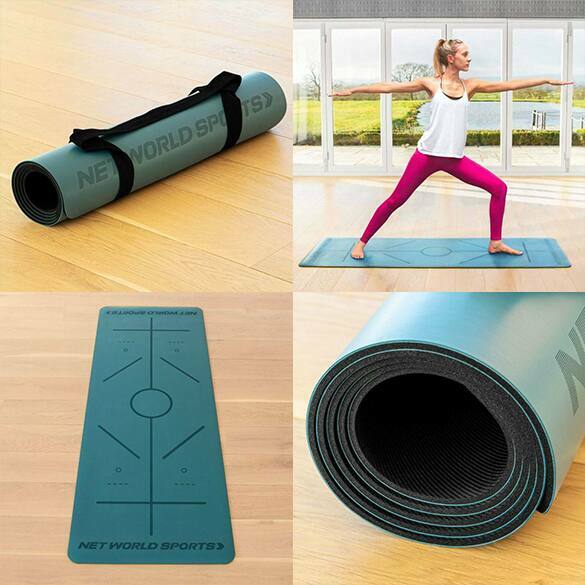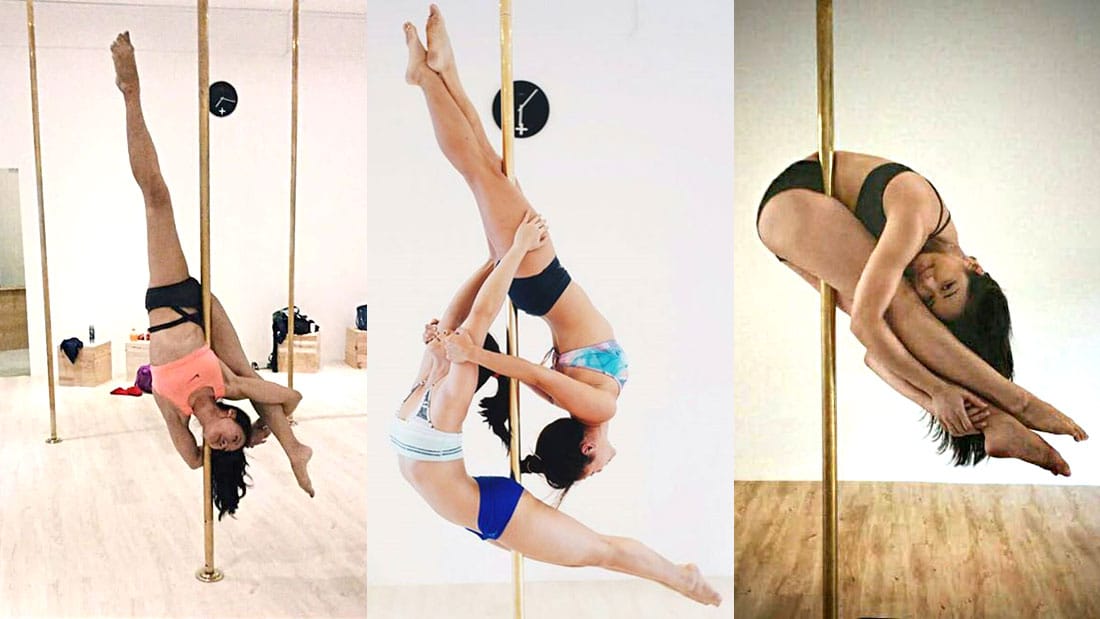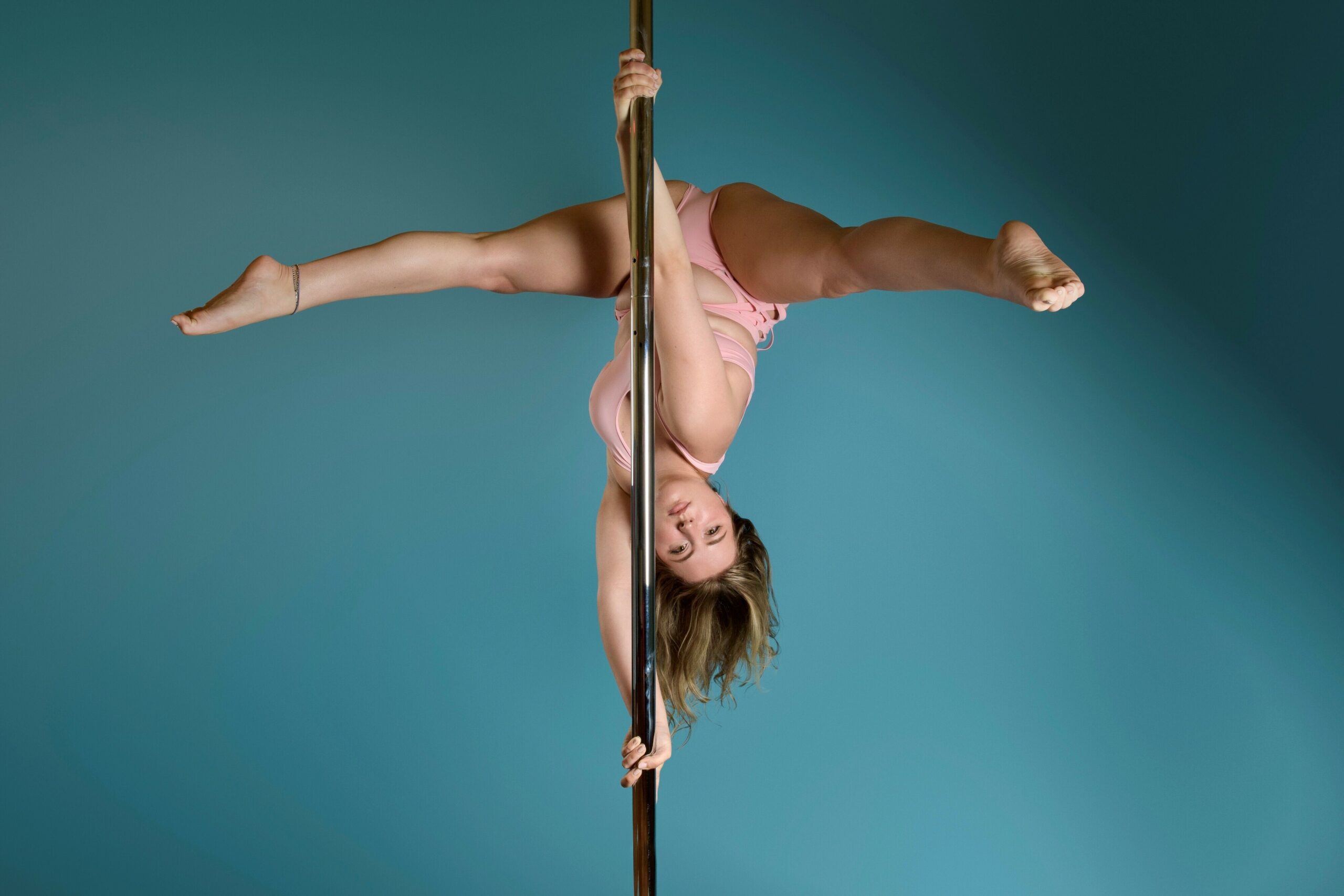Embarking on your pole yoga journey?
Pole yoga is a fun and challenging way to get in shape and build strength. It combines the flexibility and balance of yoga with the acrobatic moves of pole dancing. To make the most of your pole yoga practice, you’ll need a good mat. The right mat is your foundation for a successful practice.
Here’s a comprehensive guide to help you choose the perfect pole yoga mat that complements your movements and enhances your overall experience.
Thickness Matters:
When it comes to pole yoga mats, thickness is not just a number; it’s a crucial factor for joint protection and comfort. Opt for a mat that’s at least 1/4 inch thick. This extra cushioning can make a significant difference, especially during challenging poses and movements.
– Joint Protection and Comfort: Pole yoga involves a variety of dynamic movements, stretches, and balances that put pressure on your joints. A thicker mat provides a supportive cushion, reducing the impact on your knees, wrists, and other vulnerable areas. This not only enhances comfort during your practice but also supports long-term joint health.
– Stability During Inversions: Inversions are a fundamental aspect of pole yoga, challenging your balance and core strength. A thicker mat offers a more stable base, giving you the confidence to explore inversions without the worry of discomfort or instability. This added stability allows you to focus on refining your poses and deepening your practice.
– Versatility in Pose Exploration: Pole yoga encourages a wide range of poses and movements that test your flexibility and strength. A thicker mat provides a forgiving surface, allowing you to explore new poses with ease. Whether you’re attempting advanced stretches or perfecting your basic asanas, the right thickness in your mat can make a noticeable difference in your ability to flow through sequences seamlessly.
– Shock Absorption for Dynamic Transitions: The nature of pole yoga involves fluid transitions between poses, requiring a mat that absorbs shock effectively. A thicker mat cushions your landings during jumps, twists, and turns, reducing the impact on your joints and muscles. This shock-absorbing quality contributes to a smoother and more enjoyable practice, minimizing the risk of strain or injury.
Non-Slip Surface
Balance is key in pole yoga, and a non-slip surface is your best friend. Look for mats with textured or grippy surfaces that provide excellent traction. This feature ensures stability, allowing you to confidently flow through your poses without worrying about slipping.
- Enhanced Stability and Confidence: Pole yoga demands precise movements and balance, making a non-slip surface essential. Mats with textured or grippy surfaces provide enhanced traction, ensuring your hands and feet stay firmly in place during poses. This increased stability instills confidence, allowing you to push the boundaries of your practice without fear of slipping.
- Dynamic Movements Made Effortless: Pole yoga is all about fluid transitions and dynamic movements. A non-slip surface facilitates smooth shifts between poses, allowing you to focus on the flow of your practice rather than worrying about maintaining balance. The grip provided by the mat becomes a silent partner in your journey, making each movement effortless and controlled.
- Safety in Inversions and Twists: Inversions and twists are hallmark elements of pole yoga, and a non-slip surface becomes your safety net during these challenging poses. Whether you’re upside down or rotating into a twist, the mat’s grip ensures your hands and feet stay securely planted, reducing the risk of unexpected slips and promoting a safe and enjoyable practice.
- Durability for Long-Term Use: Mats with a reliable non-slip surface often boast enhanced durability. The grip is not only a performance feature but also a sign of a well-crafted, long-lasting mat. Investing in a durable mat ensures that the non-slip benefits endure through countless practices, making it a wise investment in both safety and longevity.
Size Considerations
The size of your mat matters in pole yoga, where movements can be dynamic and expansive. While a standard yoga mat size is generally suitable, you might prefer a larger mat for more freedom of movement. Choose a size that accommodates your practice style and preferences.
- Freedom of Movement: Pole yoga is dynamic and expansive, requiring ample space to move freely between poses. While a standard yoga mat size is suitable for many practitioners, opting for a larger mat provides an extended canvas for your practice. Enjoy the freedom to stretch, twist, and flow without the constraints of limited space.
- Comfort in Pose Transitions: Size matters when transitioning between poses, especially in sequences that demand fluidity and grace. A larger mat allows for smoother transitions, preventing interruptions in your flow. Comfort in movement is key to fully experiencing the meditative and transformative aspects of pole yoga.
- Personalized Practice Space: Your mat is your sacred practice space, and its size can influence the ambiance of your sessions. Choose a size that accommodates not only your physical movements but also your personal preferences for how you perceive and interact with your practice environment. Tailor your space to enhance focus and connection.
- Alignment and Safety: Size directly impacts your ability to maintain proper alignment during poses. A mat that aligns with your body’s dimensions provides a clear boundary, promoting safe and precise positioning. This is particularly important in pole yoga, where alignment plays a crucial role in the effectiveness and safety of each movement.
Material Matters
Consider the material of your pole yoga mat, focusing on eco-friendly and non-toxic options. Mats made of TPE (thermoplastic elastomer) or natural rubber are excellent choices. These materials not only support your health but also contribute to a more sustainable practice.
- Eco-Friendly Consciousness: Opting for a mat made from eco-friendly materials is not just a choice for the environment; it’s a commitment to a healthier practice. Materials like TPE (thermoplastic elastomer) and natural rubber are not only sustainable but also free from harmful chemicals, ensuring that your pole yoga journey aligns with both personal well-being and environmental consciousness.
- Non-Toxic for a Healthier Practice: Pole yoga involves close and prolonged contact with the mat, making it essential to choose a non-toxic material. Mats made from natural and non-toxic substances contribute to a healthier practice by minimizing exposure to harmful chemicals. Breathe easy and immerse yourself in your practice with the confidence that your mat supports your well-being.
- Grip and Traction: The material of your mat plays a significant role in its grip and traction properties. Natural rubber and TPE mats often offer a superior grip, ensuring that you stay grounded during dynamic movements and challenging poses. The right material not only enhances stability but also allows you to focus on the subtleties of your practice without the distraction of slipping.
- Durability and Longevity: The durability of your pole yoga mat is closely tied to its material composition. Quality materials withstand the rigors of regular practice, maintaining their integrity over time. Investing in a durable mat ensures that it becomes a long-term companion on your pole yoga journey, providing consistent support and performance.
Finding the perfect pole yoga mat is a personal journey. By considering thickness, non-slip surfaces, size, and materials, you can make an informed choice that enhances your practice. Invest in a mat that aligns with your needs, and get ready to elevate your pole yoga experience to new heights. Happy practicing!




